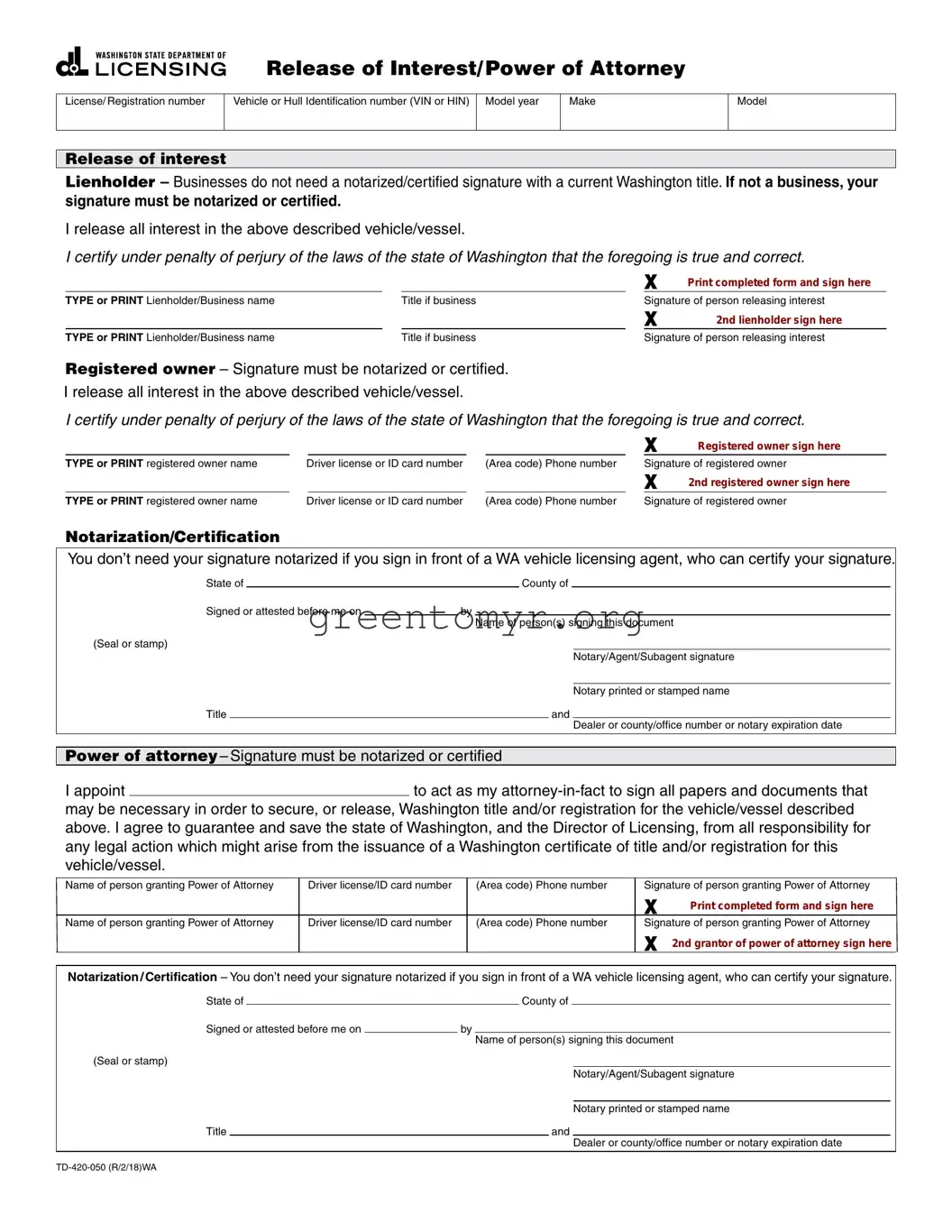The Vehicle Power of Attorney (POA) form TD-420-050 is a legal document that allows one person to authorize another individual to act on their behalf regarding vehicle-related matters. This might include registering a vehicle, replacing a title, or transferring ownership.
Any person or organization that needs to delegate authority for their vehicle transactions can use this form. This includes vehicle owners, lienholders, or even dealerships assisting with the transfer or registration of vehicles.
You might find this form useful in various situations, such as:
-
If you are unable to personally complete a vehicle transaction because of illness or travel.
-
When selling a vehicle and the buyer cannot be present for the transfer.
-
If you are a legal guardian managing a vehicle owned by someone else.
Completing the TD-420-050 form involves several straightforward steps:
-
Fill in the vehicle details like make, model, year, and VIN.
-
Provide the names and addresses of both the vehicle owner and the designated attorney-in-fact.
-
Sign and date the form. All parties involved should understand the authority being granted.
No, the Vehicle POA form does not typically require a witness or notary. However, checking local regulations is always a good idea, as requirements might differ by state.
Can I revoke the Vehicle POA once it is granted?
Yes, a Vehicle POA can be revoked at any time by notifying the attorney-in-fact and potentially submitting a revocation form, depending on your state’s rules. Make sure to communicate this change clearly to avoid confusion.
How long is the Vehicle POA valid?
The Vehicle POA remains effective until the tasks outlined in the form are completed or until you revoke the power of attorney. It is always wise to specify an end date in the document if you want to limit its duration.
If you lose the original Vehicle POA form, you can create a new one. Be sure to inform the previous attorney-in-fact and any relevant parties that the original is no longer valid to avoid unauthorized actions.
Can multiple people be given power of attorney for the same vehicle?
Yes, you can designate more than one attorney-in-fact for your vehicle. Just be very clear about the powers each person has and ensure all parties are aware of one another to prevent conflicts.
The Vehicle POA form TD-420-050 can typically be obtained from your local Department of Motor Vehicles (DMV) office or their website. Always ensure you are filling out the most recent version of the form.

